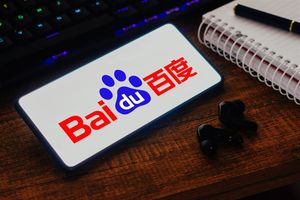Complaint alleges Aon aggressively and fraudulently marketed and scaled its CPI product, inducing Vesttoo into risky transactions based on false representations
Lawsuit details how Vesttoo’s bankruptcy was a direct result of Aon’s misconduct, lack of diligence on Vesttoo-obtained LOCs, and blatant disregard for signs of fraud
Complaint alleges China Construction Bank enabled employee’s conspiracy to produce $2.8 billion in forged collateral
The Vesttoo Creditors Liquidating Trust (the “Trust”), an independent fiduciary appointed by the U.S. Bankruptcy Court for the District of Delaware (the “Court”), today filed a complaint (the “Complaint”) in the Court against Aon plc and certain affiliates (collectively, “Aon”), China Construction Bank and an affiliate (collectively, “CCB”), and certain entities and individuals for alleged fraudulent conduct and other wrongdoing that inflicted devastating losses upon the insurance industry and led to Vesttoo’s (the “Company”) bankruptcy.
“Vesttoo’s collapse was the direct result of Aon and CCB’s fraudulent conduct,” said Lawrence Hirsh, Liquidating Trustee. “Aon knew there were serious flaws in its CPI product, yet continued to falsely market it as the gold standard in intellectual property valuation. Aon also steered its riskiest transactions to Vesttoo while ignoring glaring red flags regarding Vesttoo’s collateral providers, reaping tens of millions in fees while enabling a scheme that destabilized the global insurance market. Absent Aon’s false representations about its CPI product, Aon’s failure to satisfy its due diligence obligations to Vesttoo and its counterparties, and CCB’s facilitation of billions in forged letters of credit, Vesttoo’s business would not have relied on the misvalued deals and forged collateral that led to its demise.”
“As an independent fiduciary appointed by the Court, the Trust is seeking to hold Aon, CCB, and CCB-enabled co-conspirators accountable for the manipulation of and fraud against Vesttoo,” continued Hirsh. “This litigation represents an initial step toward justice for insurers and reinsurers who were victimized by Aon’s and CCB’s actions.”
Aon Marketed a Fraudulent CPI Product
The Complaint alleges Aon knowingly sold its Collateral Protection Insurance (“CPI”) product to Vesttoo and other insurance and reinsurance companies based on blatantly false representations. Marketed as a breakthrough insurance mechanism that delivered accurate intellectual property (“IP”) valuations, in reality, Aon’s CPI product was flawed at its core and built on fraudulent representations of Aon’s capabilities and undisclosed conflicts of interest. Despite internal awareness that its CPI product was inherently risky and incapable of delivering on Aon’s promises, Aon aggressively scaled the offering, inducing Vesttoo and others into assuming billions of dollars of insurance and reinsurance risk.
Aon Ignored Red Flags Surrounding Vesttoo’s LOC Fraud to Continue to Scale its CPI Product
The Complaint further alleges that Aon disregarded glaring warning signs regarding a scheme orchestrated by a small group of co-conspirators (including Vesttoo employee Udi Ginati and CCB employee Lam Chun-Yin (“Lam”)) to produce forged letters of credit (“LOC”) and convince Vesttoo that the LOCs were real. Meanwhile, Aon continued to persuade counterparties to participate in Vesttoo-backed transactions, despite not conducting the required due diligence on Vesttoo or its LOC collateral.
The Complaint illustrates that Aon saw a golden opportunity in Vesttoo, a well-funded but inexperienced startup. Vesttoo served as Aon’s primary path to scale its highly lucrative CPI product, which involved transactions that were significantly riskier than traditional reinsurance. Though Aon knew Vesttoo lacked the track record and operational maturity required for these complex transactions – and was aware of serious red flags regarding the LOCs provided to Vesttoo – Aon actively promoted the Company to counterparties to support its CPI product expansion.
China Construction Bank Enabled the LOC Forgery Scheme
The Complaint also seeks damages from CCB and the co-conspirators in the LOC forgery scheme, including CCB employee Lam, for allegedly fabricating over $2.8 billion in letters of credit that proved to be entirely illusory. Given Lam was licensed to conduct financial transactions for CCB’s New York Branch, the perpetrators exploited his authority and used his CCB email address to send the LOCs and to convince Vesttoo and its counterparties that they were bona fide.
Although CCB was responsible for its employee’s conspiracy to produce forged LOCs under its name, it benefitted from the perceived expansion of its reinsurance LOC business. In particular, its provision of supposed LOCs backing Aon’s high-profile CPI transactions raised CCB’s profile and enhanced its reputation as a reliable player in the insurance market.
Aon’s CPI Fraud Triggered Vesttoo’s Collapse and Wreaked Havoc on the Insurance Industry
The Complaint demonstrates that Aon’s CPI transactions were the primary cause of the Company’s downfall and the industry-wide chaos that it created. Prior to its involvement with Aon’s CPI deals, Vesttoo’s insurance and reinsurance counterparties had never drawn on Vesttoo-obtained LOCs.
However, as the early-stage companies that were involved in the CPI transactions began to default en masse, it was revealed that the IP collateral for Aon’s CPI policies were given wildly overinflated valuations by Aon that proved to cover just a small fraction – if any – of the debt the IP was meant to secure. As a result, the insurers and reinsurers in the CPI transactions began drawing on the forged LOCs – expecting bank-issued collateral – only to learn that the LOCs were forged, resulting in hundreds of millions in insurance losses.
Since Vesttoo’s collapse, Aon has recognized that its CPI business was irrevocably flawed. In recent years, Aon has quietly reoriented its business away from CPI transactions.
Complaint Highlights
Aon Marketed a Fraudulent CPI Product
- “... Aon engaged in a campaign of representations to insurers and reinsurers regarding the strength of its valuation capabilities, trumpeting that Aon had ‘the Largest & Most Specialized Team of IP Experts in the World’ producing reliable valuations for CPI transactions.” (paragraph 4)
- “At the very same time that Aon was touting its valuation capabilities in the marketplace, its employees were sounding alarms internally regarding the creation of ‘potentially catastrophic’ liability for Aon and ‘persistent and significant cultural issue[s] … deeply embedded within the valuation team,’ including ‘insane’ conflicts of interest, that made it ‘amazing [Aon] [was] able to get a single transaction done.’” (paragraph 5)
- “... [Aon and White Rock] were incentivized to provide sky-high valuations of the underlying IP, which valuations could both increase the size of the underlying loan (and thus the size of the CPI policy and associated premium) and help ensure that the transaction closed by lowering the perceived risk of loss for other transaction parties.” (paragraph 69)
- “... In light of Aon’s undisclosed inability to produce sound valuations of IP assets, when Jefferies ... received a rare peek under the hood of one of Aon’s valuations, it immediately raised concerns to Aon regarding the valuation team’s ‘voodoo math.’ As Eric Geller of Jefferies commented, ‘[t]he valuation team didn’t even value the business.’” (paragraph 164)
- “Aon internally recognized similar problems with the output of its failed valuations team, expressing reluctance to sharing its valuation methodology externally and recognizing, as noted by Chris Rafferty in Aon’s IP Solutions Group, that independent valuations by third parties might reach conclusions that ‘were materially different (lower).’” (paragraph 165)
Aon Ignored Red Flags Surrounding Vesttoo’s LOC Fraud to Continue to Scale its CPI Product
- “... As Aon looked to ‘make IP lending massive,’ it recognized internally that ‘Vesttoo is an important market to [Aon] for IP deals,’ because Vesttoo was ‘the only market interested’ in Aon’s riskiest deals for which it was ‘unlikely that the more traditional shops will have much of an appetite.’” (paragraph 10)
- “... When Aon became aware of significant red flags concerning the LOC capacity from Vesttoo’s investors, Aon not only looked the other way, but also concealed its concerns from counterparties to convince them to participate in Vesttoo-backed CPI deals.” (paragraph 10)
- “... When Vesttoo inexplicably was unable to provide a proof of funds statement from the bank (Santander) that supposedly was issuing a $50 million LOC for a CPI transaction, Aon did not investigate why Vesttoo’s investor was unable to obtain such routine documentation. Instead, an Aon employee simply typed out language for such a statement on behalf of ‘Santander & Vesttoo,’ and sent it back to Vesttoo to use instead of documentation drafted by Santander itself.” (paragraph 14)
- “... Aon admitted that Vesttoo’s delays in producing LOCs ‘left a very sour taste for several parties,’ and that Aon ‘need[ed] to fully understand the mechanics of [LOC] approval and issuance for future transactions.’ But Aon never did so. To the contrary, when another counterparty raised serious concerns to Aon regarding CCB’s ability to purportedly issue a massive $228 million LOC for a transaction, Aon internally remarked it was ‘not getting involved. It[’]s not our issue.’” (paragraph 15)
- “While complaining internally that Vesttoo was ‘the most unprofessional organization,’ Aon pushed its counterparties to work with Vesttoo and claimed Vesttoo was ‘more similar to a bank, both culturally and operationally, than a traditional insurer.’ Aon also told counterparties that Vesttoo ‘ha[d] sophisticated credit and structuring expertise,’ assuring reluctant counterparties that ‘certainty of [reinsurance] capacity will be significantly improved by the inclusion of Vesttoo.’ Meanwhile, Aon internally was grousing that Vesttoo ‘simply does not have the required experience or expertise to structure these deals correctly,’ and lamenting that if Vesttoo ‘was less strategically important’ to Aon, it ‘would have to consider resigning and not working with [Vesttoo] further.’” (paragraph 16)
China Construction Bank Enabled the LOC Forgery Scheme
- “Together, Ginati and his CCB-enabled co-conspirators forged documentation falsely stating that CCB had posted over $2.81 billion in LOC collateral, allowing them to collect millions of dollars in reinsurance premiums before the fraud finally came to light in summer 2023.” (paragraph 12)
- “Lam also used the authority CCB conferred upon him as a CCB employee to lend legitimacy to the scheme and deceive Vesttoo’s employees. On at least two occasions—once in January 2023 and again in May 2023—Vesttoo employees attended in-person meetings with Lam at CCB’s offices in Hong Kong as part of Lam’s efforts—in concert with his co-conspirators Ginati, Wang/Fu, and Wai—to deceive Vesttoo. Lam communicated with his co-conspirators and with Vesttoo using his CCB email address.” (paragraph 97)
- “... CCB’s U.S.-facing LOCs outstanding jumped from $80 million on December 31, 2021, to $1.28 billion on December 31, 2022, a year-over-year increase of over 1,500%. As a result, CCB entered AM Best’s top-fifteen list of reinsurance LOC issuers in the United States in the 2022 year.” (paragraph 102)
Aon’s CPI Fraud Triggered Vesttoo’s Collapse and Wreaked Havoc on the Insurance Industry
- “Aon’s CPI product wreaked havoc on Vesttoo and the reinsurance industry. Because Aon’s CPI borrowers overwhelmingly defaulted on the Aon-brokered CPI loans, lenders turned to the IP collateral to try to cover their losses.” (paragraph 19)
- “... While Aon touted default rates of between just 3% and 6% when marketing the CPI product, the actual default rates ended up being exponentially higher. Because Aon was intimately and uniquely aware of the flimsiness of its IP valuations, it was entirely foreseeable to Aon that these borrowers would default, leaving Vesttoo vulnerable.” (paragraph 19)
- “Aon pushed CPI loans based on highly speculative IP valuations for borrowers that had yet to generate any revenue even while admitting internally that ‘pre-revenue borrowers are not well suited to CPI loans’ because ‘[p]re-revenue opportunities make it incredibly difficult to project the value of the IP.’” (paragraph 20)
- “... When CPI deal after CPI deal collapsed in mid-2023, Vesttoo’s investors lacked valid LOCs to satisfy the claims and Vesttoo collapsed along with those deals. Aon walked away with its profits—leaving the insurers Aon convinced to work with Vesttoo holding the bag.” (paragraph 22)
Advisors
Selendy Gay PLLC and Richards, Layton & Finger, PA are serving as litigation counsel and C Street Advisory Group is serving as strategic communications advisor to the Vesttoo Creditors Liquidating Trust.
About the Vesttoo Creditors Liquidating Trust
Vesttoo Creditors Liquidating Trust was established as an independent fiduciary under the oversight of the U.S. Bankruptcy Court to pursue recovery claims on behalf of creditors harmed by Vesttoo’s collapse. The Trust’s mission is to maximize creditor recoveries and to hold accountable all parties responsible for the losses.
View source version on businesswire.com: https://www.businesswire.com/news/home/20250813963608/en/
Contacts
Media Contact
C Street Advisory Group
VesttooTrust@thecstreet.com






